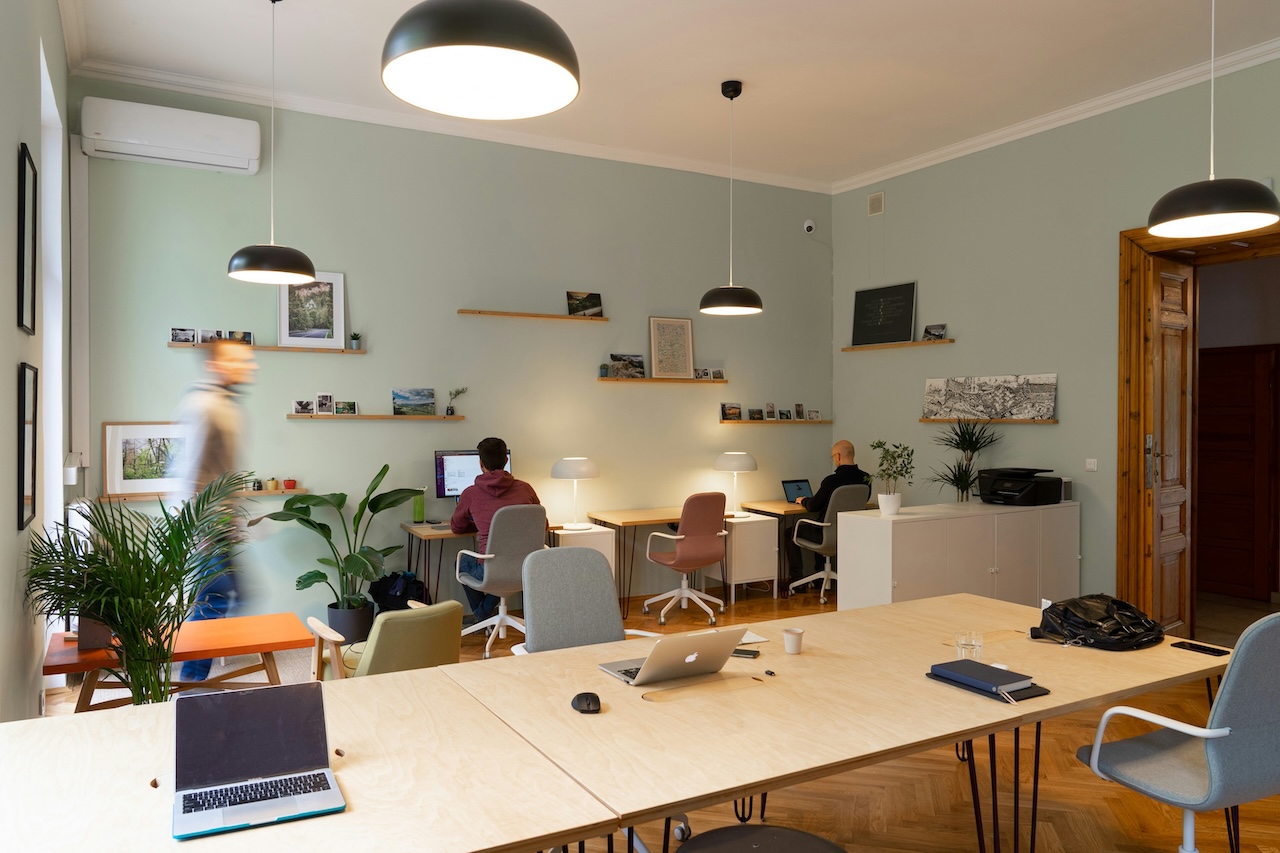Architectural firms are constantly under time pressure: while creative design and client consultation form the core of their work, detailed planning, BIM modeling, and tender documentation consume valuable resources. Targeted outsourcing can help delegate technical tasks more efficiently—allowing firms to focus on what truly matters.


Time Drainers: Where Valuable Capacity Is Lost
In many architectural firms, a significant portion of working hours is not spent on creative designs but on time-consuming technical implementation tasks. These include detailed and execution planning, creating and maintaining 3D BIM models (if this expertise is even available in-house), quantity and cost estimation, and the preparation of tender documents. While these processes are essential for precise construction planning, they consume valuable personnel resources that could be better utilized for creative concepts and strategic client consulting.
While outsourcing has long been a proven strategy in many industries to increase efficiency and optimize workloads, it is still underutilized in architecture. External specialists could take over precisely those tasks that slow down internal workflows—without compromising quality standards. This not only provides relief but also allows architectural firms to refocus on their core business: visionary planning, innovative design, and close client collaboration.


Outsourcing in Architecture: More Than Just a Cost Factor
Outsourcing is often associated solely with cost reduction, but it offers far more strategic advantages. In architecture, it’s not just about saving money—it’s primarily about optimizing workflows and efficiently integrating external expertise into the company. By delegating technical tasks to specialized partners, architectural firms can focus their internal resources on creative design, strategic consulting, and client management. This approach not only enhances efficiency but also strengthens competitiveness by enabling innovative, high-quality solutions that meet the rigorous demands of architectural planning.
A common misconception is that outsourced professionals cannot match the quality of in-house teams. In reality, many external specialists are specifically trained in German planning and construction standards and work with the same methods and quality benchmarks as internal teams. In some regions, architectural and engineering education places too little emphasis on BIM methodology, while in others, it has long been a fundamental part of training. Through outsourcing, architectural firms can not only relieve internal workloads but also bring in valuable expertise that is often difficult or costly to develop in-house through additional training.
These professionals are often even more efficient, as they focus exclusively on technical detail tasks, whereas internal teams typically handle a broader range of responsibilities. For architectural firms, this means a reliable, equally high-quality, and flexible alternative to permanent employees—a solution that not only reduces costs but also increases agility in project management.
From Building Permit to 3D Execution Planning: An Example
An architecture firm has received official approval for a commercial construction project. The next step is execution and detailed planning, which requires creating a complete 3D BIM model. This model serves as the foundation for quantity take-offs and tender documents. Instead of tying up the internal team for weeks with this task, an external specialist takes over the BIM modeling, integrating all building components and standards. The generated data is then directly exported into a tendering tool. The internal team retains full control and reviews the results—ensuring an efficient workflow without overloading in-house resources.

Internal Restructuring: Key to Successful Outsourcing
For outsourcing to work efficiently in architecture, firms must restructure their internal processes. In traditional work models, individual employees often handle a wide range of tasks—from detailed planning to client communication. However, this broad scope of responsibilities makes integrating external specialists difficult and often leads to inefficiencies. To ensure smooth collaboration, it is essential to establish clear boundaries between creative core tasks and technical implementation processes.
A key step is consciously separating routine technical tasks from creative design work and, most importantly, direct client communication. While the internal team remains responsible for design, strategic consulting, and client relations, tasks such as 3D BIM modeling and detailed execution planning can be delegated to specialized external partners. This approach brings valuable expertise into the company without overburdening internal resources.
This restructuring transforms outsourcing from a mere cost-cutting measure into a strategic tool that enhances efficiency and optimizes an architecture firm’s workflow in the long run. The added flexibility in capacity adjustments allows firms to remain efficient and competitive, even in times of fluctuating project demand.


Opportunities for Smaller Firms or Offices Outside Metropolitan Areas
Smaller architectural firms or those located outside major cities face a dual challenge: finding qualified professionals is difficult, while hiring full-time staff often carries financial risks.

Architectural firms in smaller towns or rural areas encounter unique difficulties. Talented architects and draftsmen tend to prefer working in large cities, where they have access to a wider range of projects and better career opportunities. At the same time, handling complex projects requires a certain level of staffing flexibility—but expanding the team permanently is often not financially feasible for smaller firms. This is where outsourcing presents an ideal solution, allowing external specialists to be brought in for specific tasks on a short-term basis without incurring long-term personnel costs.
By strategically utilizing external experts for technical planning, BIM modeling, or tender documentation, firms outside metropolitan areas can increase their competitiveness and take on projects that might otherwise exceed their capacity. Additionally, outsourcing enables firms to expand their service portfolio and enter new market segments—for example, offering BIM services without the need to establish a full in-house BIM department. This allows smaller architectural firms to compete with larger players, standing out through efficiency and specialized expertise to secure a strong position in the market.


Flexible Capacity Adjustments and the Ability to Handle Larger Projects
Many architectural firms face a dilemma: on the one hand, there are peak periods when additional capacity is urgently needed; on the other hand, hiring full-time staff is often difficult to justify, as workloads fluctuate. This is where outsourcing provides a crucial level of flexibility. By strategically utilizing external specialists, firms can dynamically adjust their capacity—exactly when it is needed.
This enables firms to take on larger or multiple simultaneous projects without encountering processing bottlenecks. At the same time, planning reliability improves, as technical planning tasks are completed more efficiently, reducing delays in the execution phase. This has a direct impact on meeting deadlines and ensuring client satisfaction: projects can be delivered on time and at the required quality, strengthening the firm’s position with developers and investors.
Thanks to this flexibility, architectural firms no longer need to decline projects for fear of missing deadlines. Instead, they can scale their resources on a project-by-project basis without taking on the financial risk of permanent staff costs—a strategy that is particularly advantageous in times of economic uncertainty.
Success Without Losing Identity: Outsourcing as a Strategic Asset
Concerns about outsourcing weakening a firm’s identity often arise. In reality, however, an architectural firm’s unique signature remains intact as long as design and direct client interaction stay in-house. External specialists handle only the technical execution or labor-intensive detailing, while creativity and ideas continue to originate internally.

A Smooth Start: Testing Pilot Projects and Gathering Feedback
For those unsure about whether outsourcing is the right fit or to what extent it should be implemented, starting with small pilot projects is the best approach. This allows firms to gain initial experience—such as creating as-built plans or converting a permit drawing into a construction plan.
It’s crucial to systematically evaluate each pilot project: Where did collaboration work well? Where were there communication gaps? Which standards need clearer definition next time? Should internal processes be adjusted to better integrate outsourcing? By refining these steps, firms can gradually develop a reliable workflow that can later be expanded to other areas.
Conclusion: More Focus on Creativity and Client Relations

Outsourcing in architecture is no longer just about cost savings. Instead, it enables architectural firms to focus on their creative core while still ensuring the professional execution of technically complex or time-intensive tasks.
In an industry where innovative designs and tight deadlines increasingly set the pace, outsourcing certain tasks can provide significant relief. Firms remain flexible, strengthen their profile as creative designers, and still maintain full control over quality and responsibility.
